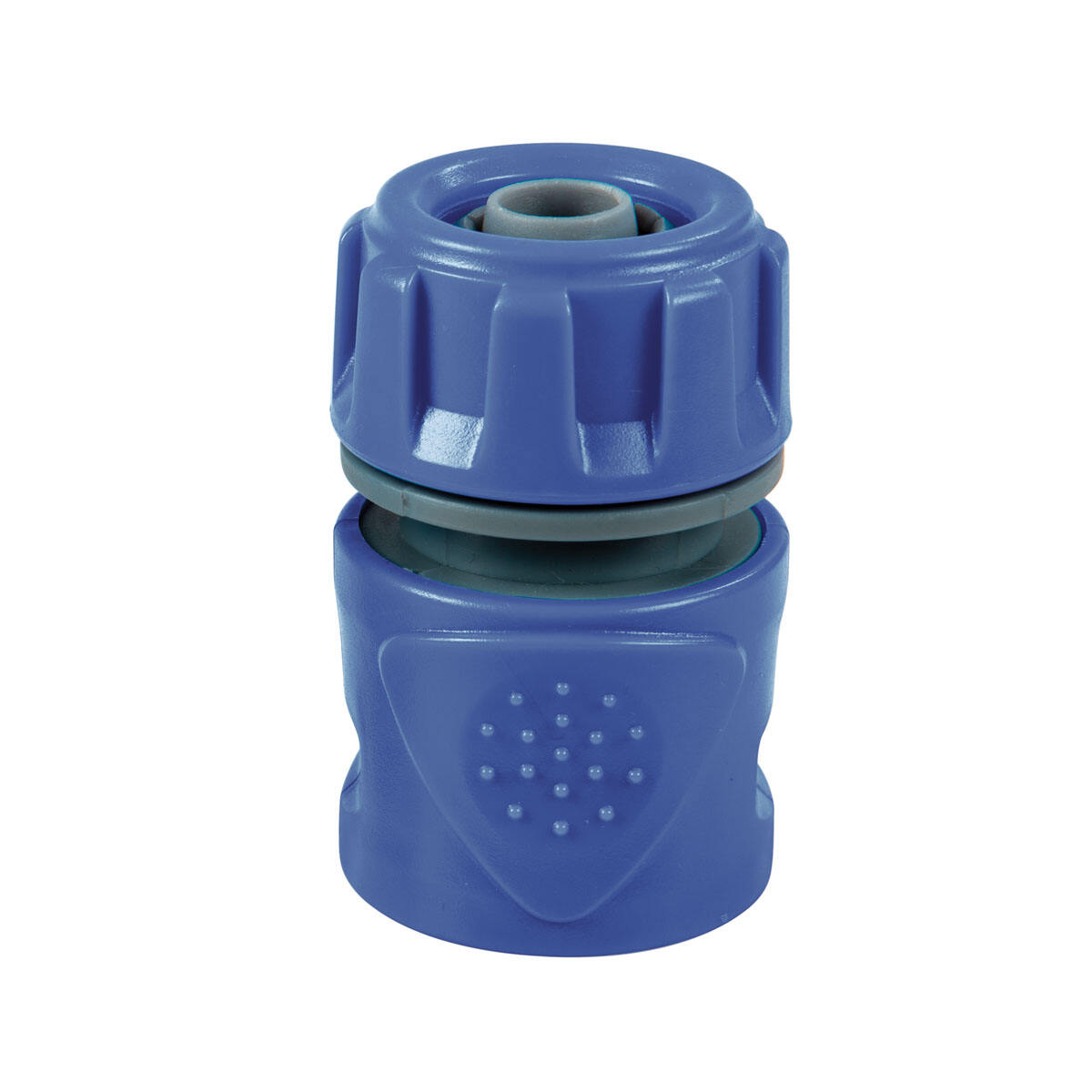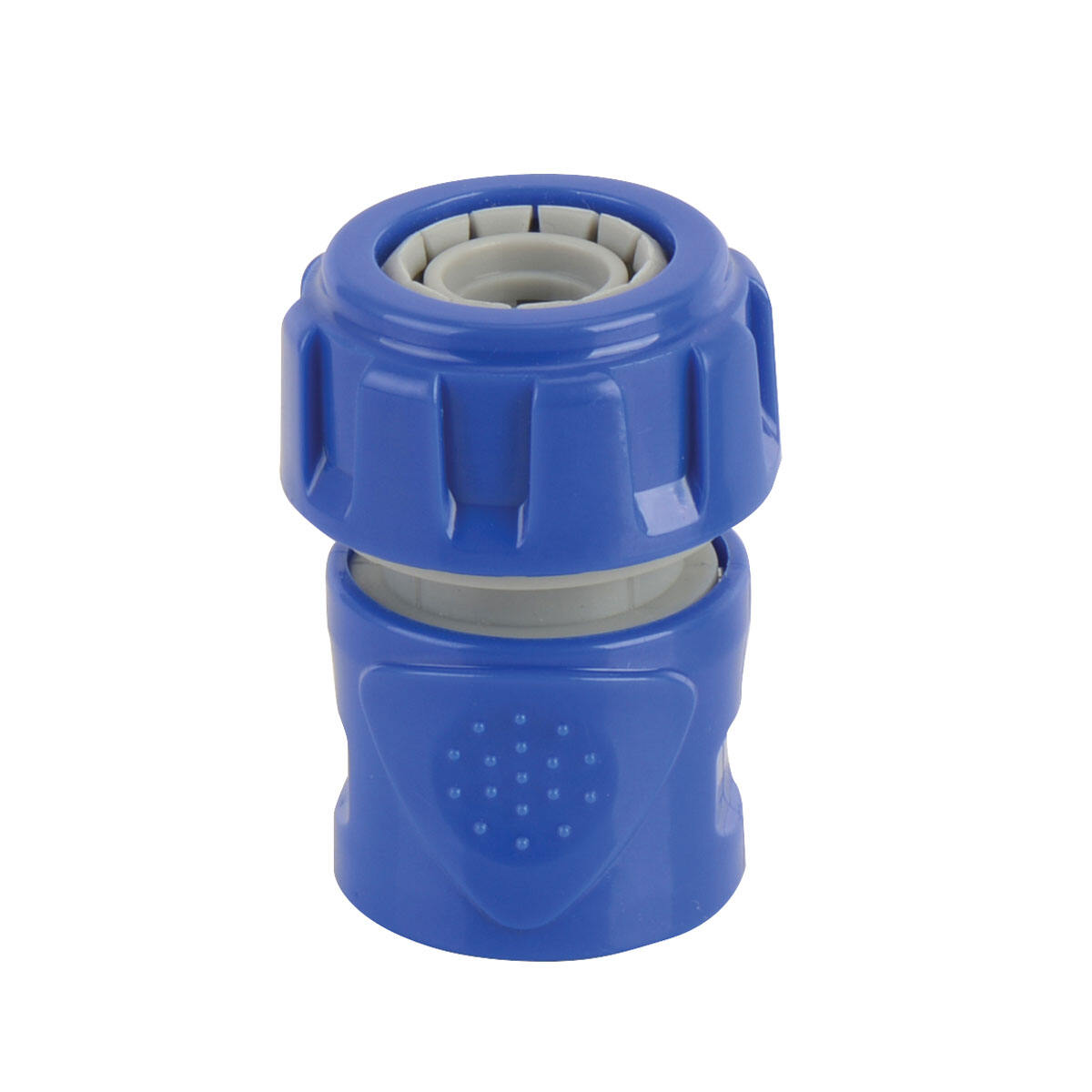Comprensión del papel esencial de los conectores de manguera modernos
Tanto en entornos residenciales como industriales, los conectores de manguera se han convertido en componentes indispensables que garantizan sistemas eficientes de transferencia de fluidos y gases. Estos dispositivos aparentemente simples desempeñan un papel crucial para mantener operaciones continuas en diversas aplicaciones. Desde el riego de jardines hasta procesos de fabricación pesada, los conectores de manguera actúan como enlaces vitales que permiten la conexión segura y confiable de diferentes tipos y tamaños de mangueras.
La Evolución de conector de manguera la tecnología ha llevado a mejoras significativas en el diseño, los materiales y la funcionalidad. Los conectores modernos para mangueras ofrecen una mayor durabilidad, capacidades superiores de sellado y una facilidad de uso sin precedentes. Al explorar sus numerosos beneficios, queda claro por qué estos componentes se han convertido en esenciales en los sistemas contemporáneos de gestión de fluidos.
Beneficios clave en aplicaciones residenciales
Mantenimiento mejorado de jardines y césped
Para los propietarios de viviendas, los conectores de manguera revolucionan las tareas de mantenimiento exterior. La capacidad de conectar y desconectar rápidamente diversas herramientas de riego hace que el cuidado del jardín sea más eficiente y agradable. Los conectores de manguera de alta calidad garantizan conexiones libres de fugas, evitando el desperdicio de agua y manteniendo una presión constante para un óptimo cuidado de las plantas.
Los conectores de manguera modernos también facilitan el uso de múltiples accesorios de riego, desde boquillas pulverizadoras hasta aspersores, sin necesidad de instalaciones permanentes. Esta versatilidad permite a los propietarios adaptar sus sistemas de riego según las necesidades estacionales y los requisitos específicos del jardín.
Tareas Simplificadas de Mantenimiento Doméstico
Más allá de la jardinería, los conectores de manguera resultan invaluables en diversas actividades de mantenimiento doméstico. Ya sea limpiando superficies exteriores, lavando vehículos o manteniendo piscinas, los conectores de manguera confiables garantizan conexiones estables y un flujo de agua constante. Sus características de conexión rápida ahorran tiempo y esfuerzo, haciendo que las tareas de mantenimiento rutinarias sean más manejables.
La durabilidad de los conectores de manguera modernos significa que pueden soportar un uso frecuente y exposición a diversas condiciones climáticas, proporcionando un valor a largo plazo para los propietarios. Su compatibilidad con diferentes tamaños y tipos de mangueras aumenta su utilidad práctica en entornos domésticos.
Aplicaciones Industriales y Ventajas
Optimización del Proceso de Fabricación
En entornos industriales, los conectores de manguera desempeñan un papel fundamental para optimizar los procesos de fabricación. Su capacidad para mantener conexiones seguras bajo altas presiones y temperaturas garantiza flujos de producción ininterrumpidos. Los conectores de manguera industriales están diseñados para cumplir con estrictas normas de seguridad y facilitan modificaciones rápidas del sistema cuando sea necesario.
La integración de materiales avanzados en los conectores modernos de mangueras ha mejorado significativamente su resistencia a sustancias corrosivas y condiciones extremas. Esta mayor durabilidad se traduce en requisitos de mantenimiento reducidos y una vida útil operativa más larga, contribuyendo finalmente a la eficiencia de costos en las operaciones industriales.
Beneficios de seguridad y cumplimiento
Los conectores de mangueras industriales están diseñados con la seguridad como consideración principal. Sus mecanismos de bloqueo seguros previenen desconexiones accidentales, mientras que los materiales especializados garantizan compatibilidad con diversos productos químicos y sustancias. Este enfoque en la seguridad ayuda a las instalaciones a cumplir con las regulaciones del sector, protegiendo al mismo tiempo a los trabajadores y al equipo.
La estandarización de las especificaciones de los conectores de mangueras en diversas industrias ha facilitado los procesos de mantenimiento y reemplazo. Esta uniformidad asegura que las instalaciones puedan obtener rápidamente componentes compatibles, minimizando el tiempo de inactividad y manteniendo la eficiencia operativa.

Innovaciones Técnicas y Desarrollos Futuros
Capacidades de integración inteligente
La última generación de conectores para mangueras incorpora funciones inteligentes que permiten el monitoreo de la integridad de la conexión y los parámetros de flujo. Estas innovaciones ayudan a prevenir fallos del sistema y optimizan el uso de recursos mediante el análisis de datos en tiempo real. La integración de tecnología de sensores en los conectores para mangueras representa un avance significativo en las capacidades de mantenimiento preventivo.
Los futuros desarrollos en la tecnología de conectores para mangueras inteligentes prometen capacidades aún mayores de control y monitoreo, lo que podría revolucionar los sistemas de gestión de fluidos en diversas aplicaciones. La capacidad de predecir necesidades de mantenimiento y prevenir fallos antes de que ocurran aumentará aún más el valor de estos componentes esenciales.
Avances en Ciencia de Materiales
La investigación continua en ciencia de materiales sigue generando mejoras en el diseño y la funcionalidad de los conectores para mangueras. Los nuevos materiales compuestos ofrecen una mayor durabilidad al tiempo que reducen el peso y los costos de fabricación. Estos avances contribuyen al desarrollo de soluciones de gestión de fluidos más eficientes y sostenibles.
La incorporación de materiales antimicrobianos en ciertas aplicaciones de conectores para mangueras demuestra la capacidad de respuesta de la industria ante necesidades cambiantes, especialmente en sectores donde la higiene es fundamental. Dichas innovaciones destacan la evolución constante de la tecnología de conectores para mangueras para hacer frente a desafíos emergentes.
Consideraciones sobre el Mantenimiento y la Longevidad
Estrategias de Mantenimiento Preventivo
La inspección y mantenimiento regulares de los conectores de manguera garantizan un rendimiento óptimo y una vida útil prolongada. Prácticas sencillas como la limpieza, el almacenamiento adecuado y el reemplazo oportuno de componentes desgastados pueden influir significativamente en la fiabilidad del sistema. Comprender los requisitos específicos de mantenimiento para los diferentes tipos de conectores de manguera ayuda a los usuarios a maximizar su inversión.
El desarrollo de diseños fáciles de mantener ha simplificado el cuidado de los sistemas de conectores de manguera. Características como indicadores visuales de desgaste y la posibilidad de realizar mantenimiento sin herramientas reducen la complejidad de las tareas de mantenimiento rutinarias, al tiempo que aseguran un rendimiento constante.
Impacto Ambiental y Sostenibilidad
Los conectores de manguera modernos están siendo diseñados cada vez más teniendo en cuenta aspectos medioambientales. El uso de materiales reciclables y procesos de fabricación respetuosos con el medio ambiente refleja el compromiso de la industria con la sostenibilidad. Diseños eficientes en el consumo de energía y la reducción de residuos de material contribuyen a disminuir el impacto ambiental durante todo el ciclo de vida del producto.
El enfoque en la durabilidad y reparabilidad en el diseño contemporáneo de conectores para mangueras se alinea con prácticas sostenibles al reducir la frecuencia de reemplazos y minimizar los desechos. Este enfoque beneficia tanto a los usuarios como al medio ambiente, manteniendo altos estándares de rendimiento.
Preguntas Frecuentes
¿Con qué frecuencia se deben reemplazar los conectores para mangueras?
La frecuencia de reemplazo de los conectores para mangueras depende de varios factores, incluyendo la intensidad de uso, las condiciones ambientales y la aplicación específica. En general, se recomienda inspeccionar regularmente los conectores y reemplazarlos cada 2-3 años para uso residencial, o antes si se observan signos de desgaste o daño. Las aplicaciones industriales pueden requerir reemplazos más frecuentes según las demandas operativas y los requisitos de seguridad.
¿Qué materiales son mejores para diferentes aplicaciones?
Para uso residencial, los conectores de latón y plástico de alta calidad suelen ser suficientes para aplicaciones de jardín y uso doméstico general. En entornos industriales, a menudo se requieren acero inoxidable, aleaciones especializadas o materiales resistentes a productos químicos, dependiendo de los requisitos específicos de la aplicación. La elección del material debe considerar factores como las clasificaciones de presión, rangos de temperatura y compatibilidad química.
¿Cómo puedo prevenir fugas en las conexiones de manguera?
Para evitar fugas, asegúrese de una instalación correcta con materiales de sellado adecuados, evite apretar en exceso y revise regularmente las conexiones en busca de desgaste o daños. También es esencial utilizar componentes compatibles y mantener superficies de contacto limpias. Para aplicaciones de alta presión, considere el uso de compuestos de sellado especializados o cinta diseñada para la aplicación específica.


